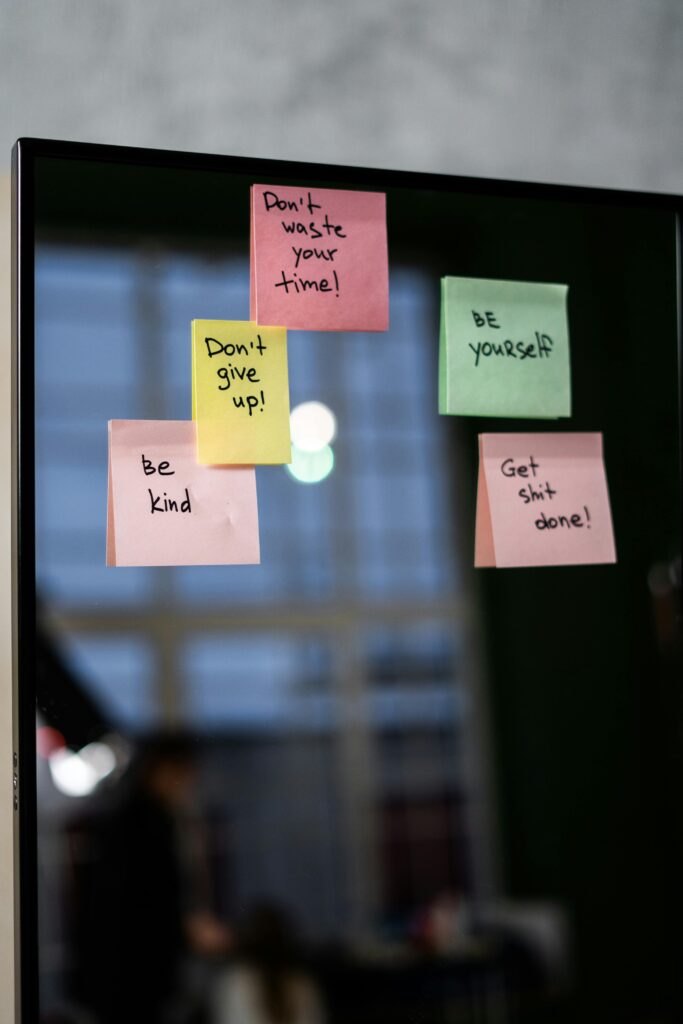How to Overcome Procrastination for Students
This post contains affiliate links, which means I may earn a small commission at no extra cost to you if you purchase through them. I only recommend products I truly love and think you’ll vibe with too. Check out our privacy policy and disclosure here.
How to overcome procrastination for students begins with a simple truth: you’re not lazy, and you’re not broken.
Instead, your brain is doing exactly what it’s designed to do—seek immediate rewards while avoiding things that feel hard or boring.
Unfortunately, this natural tendency can turn even the smartest students into masters of delay.
Here’s my experience with what happens to some students: you have a big assignment due next week. Moreover, you know it’s important, and you know weeks in advance that this assignment is coming. Yet somehow, you find yourself doing any and everything besides tackling that major grade assignment.
Sound familiar? If so, you’re not alone. In fact, studies show that nearly 95% of students struggle with putting off important tasks at some point.
My Classroom Wake-Up Call
I’m no expert by any means; I’m simply sharing my personal experience with you, and I hope you will share your experiences with me in the comments below.
A couple of years ago, I observed some of my brightest athletes in various class periods create their own unnecessary stress by waiting until the last minute to get a test grade assignment done that could fail them for the grading period.
The act of missing another deadline was real as well as the consequences that would follow.
Their grades were going to suffer, and they wouldn’t be allowed to play football for the next grading cycle.
However, this wasn’t a story about lack of ability—these athletes were intelligent and actually cared about their grades. Rather, they were trapped in a cycle of delay and panic that many students know all too well.
That moment changed how I approached teaching. Consequently, I started paying closer attention to the real reasons students procrastinate.
What I found surprised me. Most students weren’t being lazy or irresponsible.
Instead, they were overwhelmed, anxious, or simply didn’t know where to start.
From that point forward, I began sharing best practice strategies with my students—techniques that actually work with how our brains are wired. The results were so telling that I should have done an action research paper on this for my Master’s degree.
Furthermore, my athletes started turning in assignments on time, and more importantly, they felt better about their work.
How to Overcome Procrastination for Students: The Science Behind the Struggle
Your Brain on Procrastination
To beat procrastination, first you need to understand what’s happening in your brain.
When you think about a difficult task, your brain’s alarm system (called the amygdala) can trigger a fight-or-flight response.
As a result, your body literally treats homework like a threat.
Meanwhile, another part of your brain—the one responsible for instant gratification—starts looking for easier, more rewarding activities.
This explains why Netflix or playing video games suddenly becomes irresistible when you have studying to do.
The Procrastination Cycle
Most students get stuck in a predictable pattern:
- Avoidance: You put off the task because it feels overwhelming
- Guilt: You feel bad about not starting
- Panic: The deadline approaches, creating more stress
- Rush: You complete the work quickly, often at lower quality
- Relief: You feel temporary relief, but also reinforce the pattern
Breaking this cycle requires specific strategies that address each stage.
Keep reading…
How to Overcome Procrastination for Students: Proven Strategies That Work
The Two-Minute Rule
If a task takes less than two minutes, do it immediately. This simple rule prevents small tasks from piling up and becoming overwhelming.
For example, instead of letting emails accumulate, respond to quick ones right away.
Similarly, put assignment due dates in whatever device you have (phone, tablet, laptop, etc.) as soon as you are aware of them.
Break It Down Method
Large projects feel impossible because your brain can’t process the entire scope. Therefore, break every big task into smaller, specific steps.
If you have a task (such as writing a research paper) that requires a lot of time, break the steps down like this until you get the job done:
- Choose topic (15 minutes)
- Find three sources—books, articles, or websites that have information about your topic (30 minutes)
- Create outline (20 minutes)
- Write introduction (45 minutes)
👉The Passion Planner or Panda Planner make breaking down tasks visual and rewarding.
Each step feels manageable, and you’ll build momentum as you complete them.
Many of my students used a project planning whiteboard to visually map out their steps.
Seeing all the pieces on one board helped them stay on track and cross off completed tasks.
The Pomodoro Technique
This time-management method uses focused work sessions followed by short breaks. Here’s how it works:
- Set a timer for 25 minutes
- Work on one task with complete focus
- Take a 5-minute break when the timer goes off
- Repeat the cycle
- After four cycles, take a longer 15-30 minute break
This technique works because it makes work feel temporary and builds in rewards.
Creating Your Anti-Procrastination Environment
Remove Temptations
Your environment shapes your behavior more than willpower does. Therefore, make it easier to focus by removing distractions.
Put your phone in another room, use website blockers during study time, and create a dedicated workspace that’s only for schoolwork.
👉 Create your focus zone with a Blue Light Blocking Desk Lamp and Noise-Cancelling Headphones to minimize distractions.
Use Visual Cues
Place reminders where you’ll see them.
For instance, put sticky notes on your bathroom mirror, set your textbooks/Chromebooks on your pillow, or write due dates on a calendar you check daily.
These visual triggers help your brain remember what’s important.
The Implementation Intention Strategy
Research shows that students who make specific “if-then” plans are more likely to follow through. Create statements like:
- “If it’s 7 PM on weekdays, then I’ll review my notes for 30 minutes”
- “If I finish dinner, then I’ll work on my math homework”
- “If I feel overwhelmed by an assignment, then I’ll break it into three smaller tasks”
How to Overcome Procrastination for Students: Advanced Techniques
The Five-Minute Start
Commit to working on a task for just five minutes.
Often, starting is the hardest part, and you’ll naturally continue beyond the five-minute mark.
Even if you stop after five minutes, you’ve built progress and momentum.
Common Procrastination Triggers and Solutions
| What Makes You Procrastinate | Why It Happens | Quick Fix |
|---|---|---|
| Assignment feels too big | Brain gets overwhelmed | Break it into 3-5 smaller steps |
| Don’t know where to start | Lack of clear first step | Write down one tiny action you can do now |
| Perfectionism kicks in | Fear of making mistakes | Set a timer for “good enough” work |
| Boring or difficult subject | Brain seeks easier rewards | Use the 5-minute rule to just start |
| Too many distractions | Environment works against you | Remove phone and close unnecessary tabs |
| Deadline feels far away | No sense of urgency | Create fake earlier deadlines |
🌟Use this table to identify your personal procrastination patterns and try the matching solutions.🌟
Accountability Systems
Tell someone–not just anyone–about your goals and deadlines.
Better yet, find a study buddy who’s also working to beat procrastination.
Check in with each other regularly, and celebrate small wins together.
Social pressure—when used positively—can be a powerful motivator.
Dealing with Perfectionism and Fear
Good Enough Is Often Perfect
Perfectionism is procrastination in disguise.
Many students delay starting because they’re afraid their work won’t be perfect.
However, submitting good work on time beats perfect work submitted late every single time.
Reframe Failure
Instead of seeing mistakes as failures, view them as learning opportunities.
Each “failed” attempt teaches you something valuable about the task or about yourself.
Additionally, remember that your teachers would rather see your authentic effort than your stress-induced panic work.
How to Overcome Procrastination for Students: Building Long-Term Habits
Start Small and Be Consistent
Focus on building tiny habits that you can maintain every day.
For example, commit to reading one page of your textbook/ebook each morning, or reviewing notes for just ten minutes before bed.
Small, consistent actions create lasting change better than sporadic intense efforts.
Celebrate Progress
Acknowledge every victory, no matter how small!
Finished one section of your paper? That’s worth celebrating.
Attended class when you didn’t feel like it? Give yourself credit.
Your brain learns to associate hard work with positive feelings when you celebrate progress.
Plan for Setbacks
Everyone procrastinates sometimes. Instead of letting one bad day derail your progress, plan for setbacks.
Decide in advance how you’ll get back on track after procrastinating. This prevents the all-or-nothing thinking that keeps many students stuck.
Technology Tools That Help
Apps and Extensions
Several digital tools can support your anti-procrastination efforts:
- Forest: Grows virtual trees while you focus, gamifying productivity
- Cold Turkey: Blocks distracting websites and apps during study time
- Todoist: Organizes tasks and deadlines in a simple, visual format
- RescueTime: Tracks how you spend time on your devices
While apps help, many students find physical tools more effective.
👉The Time Timer Visual Timer helps with Pomodoro sessions, and the Rocketbook Reusable Notebook lets you organize tasks without waste.
Digital Calendars
Use your phone’s calendar to schedule specific study times.
Not only treat these appointments with yourself as seriously as you would meetings with your coaches, teachers, or doctors but also set reminders 15 minutes before each study session to help with transitions.
Learning how to overcome procrastination for students isn’t about becoming a different person overnight. Rather, it’s about understanding how your brain works and using that knowledge to your advantage.
The strategies in this article aren’t theories—they’re practical tools that thousands of students have used successfully.
Remember the brief story I shared above about my student athletes? They started with just the two-minute rule and breaking down assignments.
Within a nine week grading period, their grades improved, and most importantly, their stress levels dropped dramatically.
Now don’t get me wrong. They still procrastinated occasionally—we all do—but they now had the tools they could use and take with them to high school (and beyond) to help them get back on track when they found themselves slipping into old, familiar habits.
Your journey to beating procrastination starts with a single small action.
Pick one strategy from this article and try it today.
Don’t wait for Monday, or next week, or next semester. The best time to start building better habits is right now!
Finally, be patient with yourself as you develop these new skills. Change takes time, but every small step forward is progress worth celebrating.
👉What you should read next:











No Comment! Be the first one.